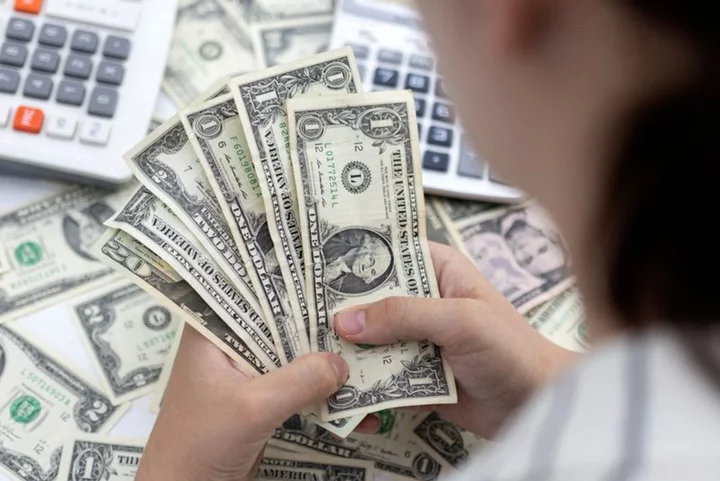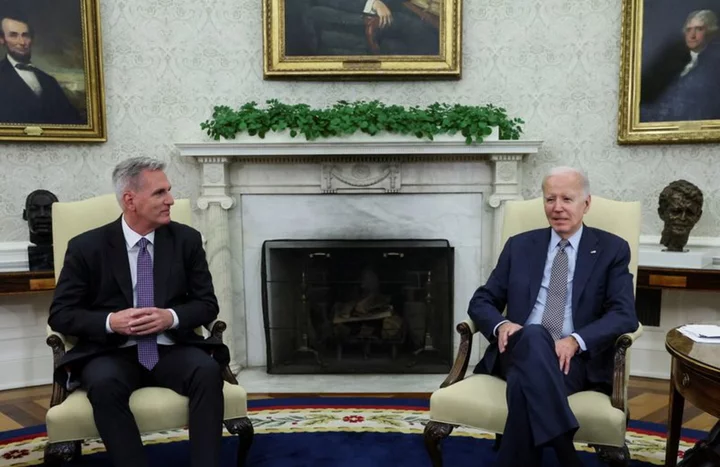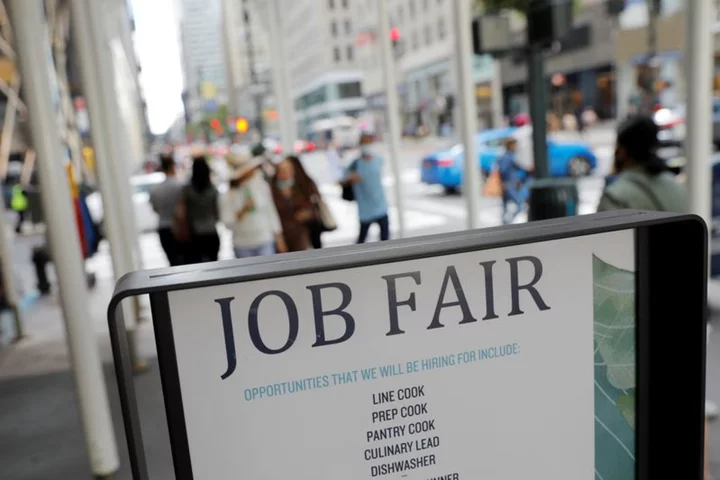By Davide Barbuscia
NEW YORK An expected surge in Treasury bill issuance could throw a wrench into the gears of hedge fund trades that have resulted in record short positions, potentially disrupting bond markets if speculators quickly unwind their holdings.
In recent weeks, hedge funds have taken significant short leveraged positions in some Treasuries futures - contracts for the purchase and sale of bonds for future delivery - as part of a so-called basis trade which takes advantage of a difference between the price of cash bonds and futures, analysts say. The difference is partly resulting from asset managers' demand for Treasuries futures, which could be due to economic concerns, analysts said.
However, new government bond issuance could push up rates in short-term funding markets where hedge funds leverage their holdings, possibly leading to an unwind of this positioning. This, in turn, could pressure bonds or even force the Federal Reserve to intervene, analysts have cautioned.
"This could be one risk to that kind of trade developing that forces a lot of these funds to close these basis trades and then create shock waves throughout the market," said Gennadiy Goldberg, head of U.S. rates strategy at TD Securities USA.
The recent resolution of the U.S. debate over extending the debt ceiling means Treasury bill sales are set to surge to about $1 trillion by year end as the Treasury General Account (TGA) is replenished. Generally, an increase in government borrowing drains reserves from the banking system, and because banks absorb the new issuance they have less money to lend.
That scenario could lead to a spike in rates in the repurchase agreements (repo) market, similar to what happened in September 2019. That was when falling reserves led to a surge in the cost that banks and other market players pay to raise overnight loans to fund their trades, forcing the Fed to intervene by injecting liquidity into repo markets.
"Less liquidity could mean a shift in the supply and demand of the repo market," with hedge funds potentially facing higher rates just because there is less cash in the system to lend, said Steven Zeng, U.S. rates strategist at Deutsche Bank.
In that case, a large but orderly unwinding of hedge funds' positions in Treasuries could push yields higher relative to other fixed-income instruments, he added. "A bad outcome ... would be a disorderly unwind of these trades, which forces the Fed to step in."
To be sure, the risk of liquidity drainage would diminish if money market funds absorbed the new Treasury bill issuance by reducing their investments in the Fed's reverse repo facility (RRP), where they park their cash.
But some analysts fear bank reserves could decline if the Treasury bills do not offer higher returns than the RRP or if expectations of more interest rate hikes discourage money funds from extending the duration of their investments.
U.S. Treasury Secretary Janet Yellen last week said her department was monitoring for signs of market disruptions as the government rebuilds its cash balance through Treasury bills.
Fed Chair Jerome Powell also said in a press conference last week that the Fed would be "monitoring market conditions carefully" as the Treasury refills its balance.
BASIS TRADE
Relative value hedge funds and macro managers are typical hedge funds that enter basis trades, which work by selling a futures contract, buying Treasuries deliverable into that contract with repo funding, and delivering them at contract expiry. The unwinding of basis trade positions contributed to illiquidity in Treasuries in March 2020, when the market seized up amid rising pandemic fears, prompting the Fed to buy $1.6 trillion of government bonds.
Commodity Futures Trading Commission (CFTC) data at the end of May showed speculators' bearish bets on U.S. Treasury two-year, five-year, and 10-year bonds had grown to their largest ever. Some of those shorts have been scaled back, but net shorts on two-year notes hit a new record in the week ending June 13.
Some hedge funds may short Treasuries because of macroeconomic assumptions.
"Quantitative hedge funds have been shorting Treasuries because trend models continue to indicate downtrend in prices and discretionary hedge funds see negatives, such as inflation, tight labor market and the hawkish Fed,” said Deepak Gurnani, founder and managing partner at hedge fund Versor Investments.
But according to several analysts, the recent buildup in shorts was more the result of the arbitrage opportunity than an indication of speculators' bets on the direction of rates.
The buildup in shorts has coincided with an increased use of the repo market.
The volume of transactions underlying the Secured Overnight Financing Rate (SOFR), which is a measure of the cost of borrowing cash overnight collateralized by Treasuries, has risen rapidly this year, data from the New York Federal Reserve shows.
SOFR volume topped $1.6 trillion on June 1 - the highest since the New York Fed began publication of the rate in 2018.
"That data matches very well with the shorts by leveraged investors, so that's suggesting that the leveraged funds are going long in cash Treasuries and being short in the futures," said Deutsche Bank's Zeng.
(Reporting by Davide Barbuscia in New York; Additional reporting by Carolina Mandl in New York; Editing by Megan Davies and Matthew Lewis)









